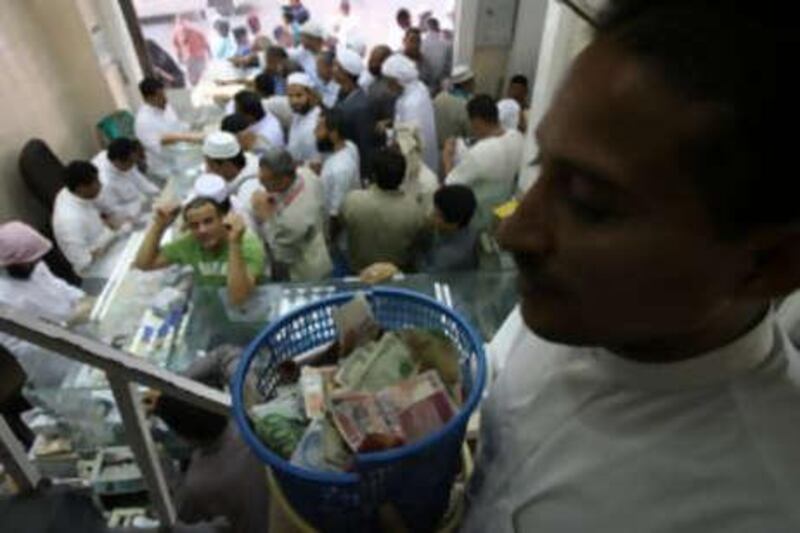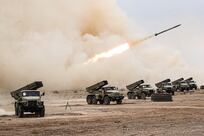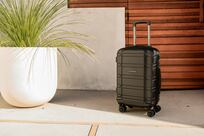MECCA // At a time when most people in the world cringe at the idea of parting with their cash, hundreds of thousands of pilgrims are pumping foreign currency into one of Islam's holiest cities. Struggling to keep up, staff at money exchange centres in Mecca are stuffing waste baskets with cash as pilgrims swap their money for the Saudi riyal. Here, you would not think there is a financial crisis. Currencies from around the world, such as the yuan, the rupee, the euro, the US dollar and the dirham, were thrown together in blue or pink plastic waste baskets, and carried off to safer locations. The rush to change money comes as pilgrims spend the next few days away from the commercial world, praying and performing rituals of haj outside Mecca. One local financial analyst estimated that $4.8 billion in foreign currency came into Saudi Arabia during haj of which 50 per cent is in US dollars. The average haji spends $3,000 during his pilgrimage. Others spent yesterday rushing to purchase gold, some as gifts for others, and the rest as an investment in one of the world's oldest currencies. I overheard some of the women pilgrims beckon their husbands with that excuse: "Gold is forever, we have to buy more and save it for our children." With human traffic in the city so congested that walking anywhere is difficult, some pilgrims climbed Mecca's steep, mountainous landscapes to move about the city. Others camped on the floors of the hotels or any bit of space they found and ate their lunch or dinner, or else they took a quick nap before venturing out again to face the congestion. Flags from different countries were hung everywhere, on stores, buses and even street lamps, serving as markings for meeting points for the different groups of pilgrims. Beggars also gathered at these points, in the hopes of garnering some handouts in the spirit of giving during haj. Tens of thousands opted to remain at the Grand Mosque, praying and enduring the almost constant stepping on their feet - or on their heads as they prostrated themselves - as other pilgrims shoved along trying to get in or out of the mosque. People were everywhere: on almost every sidewalk, in every corner of the Grand Mosque, including its staircases and even on rocks along the mountain surrounding the holy site housing the Kaaba. Pilgrims from around the world have made Mecca their settlement. Over the course of haj, pilgrims travel about 14 kilometres from Mecca to Arafat and back, stopping at the sacred sites of Mina and Muzdalifa to perform rituals, including stoning pillars that represent the devil. But the pilgrimage to Mecca is the easiest part of the haj. Now, the same pilgrims are on their way to the tent city of Mina or directly to Arafat, where their haj will begin, and they will be walking for many kilometres against a slow traffic as they perform prayers and rituals. "I don't care if my muscles hurt and I don't care if I get sick or die," said Khania Alpaydin, 70, a Turkish pilgrim who came to haj with her son and his family. Mrs Khania was hiking 200 metres up to Ghar Hera, the cave where the Quran was first revealed to the Prophet Mohammed. She was one of the hundreds of other pilgrims who took the opportunity to visit historic sites across the city and to rediscover the journey of the Prophet in the spreading of his message. "It is like visiting the Prophet himself," she said, as she hiked along with her son's mother-in-law, who is also 70. "No better place to die," they both said at the same time. There are daily reports of the elderly and the sick dying while performing haj. Over the past few days, there have been 10 reported deaths. rghazal@thenational.ae
Many pilgrims, many currencies
Haj diary: Despite the crunch hundreds of thousands of pilgrims are pumping foreign currency into one of Islam's holiest cities.

Editor's picks
More from the national




